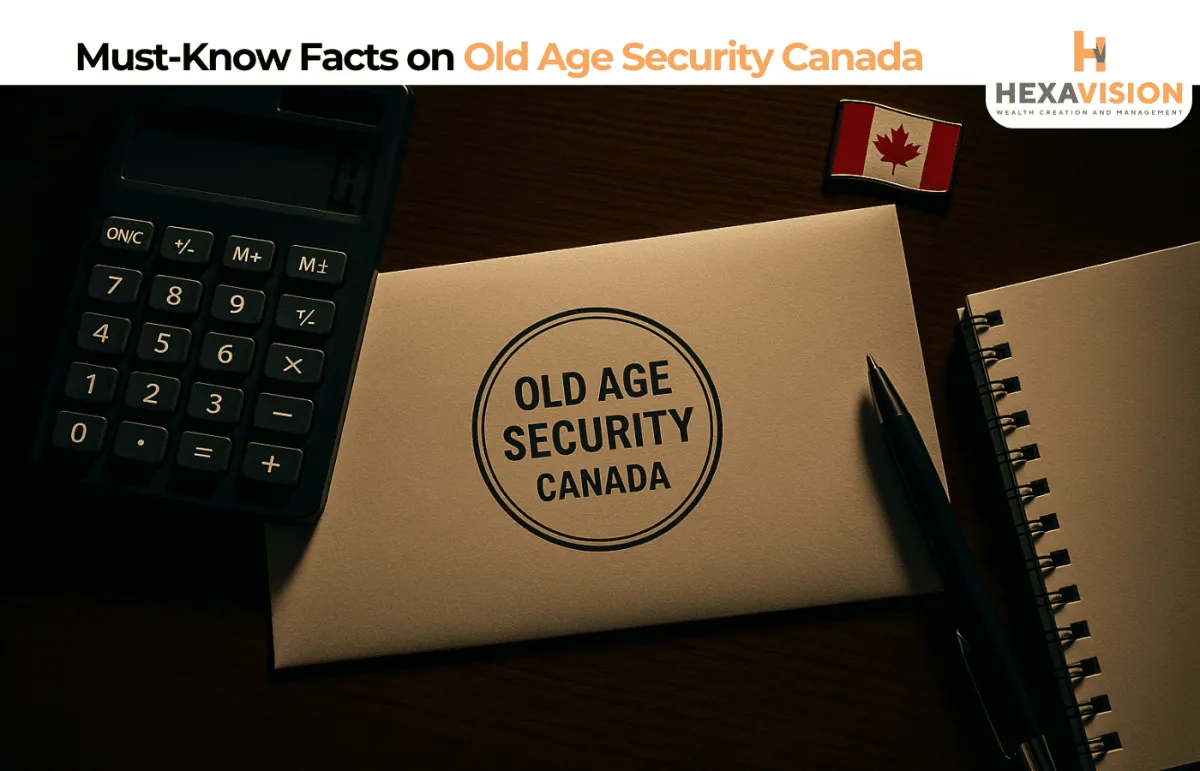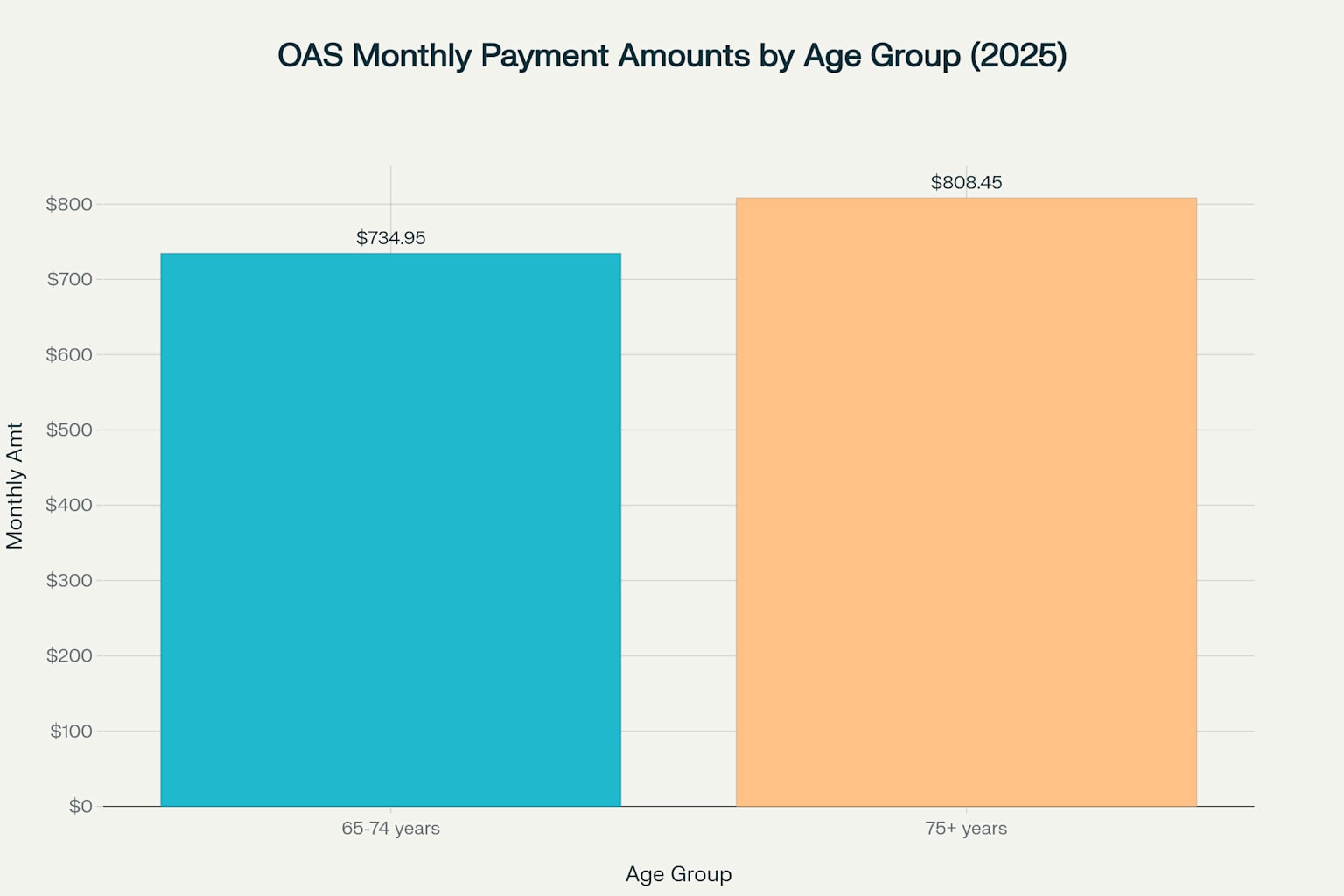
Old Age Security Canada 2025: What They Don’t Tell You
Old Age Security Canada (OAS) is the federal pension every Canadian receives once they reach 65, regardless of work history. Essentially, it’s a lifetime monthly pension funded by taxpayers, designed as a safety net for seniors. (Imagine it as the steady trusty old friend that kicks in at 65.) To qualify, you must have lived in Canada at least 10 years after age 18. Full OAS requires 40 years residency; fewer years give you a proportional partial pension (e.g. 20 years yields 50%). Importantly, OAS is taxable income and subject to income testing.
But who exactly qualifies for the Old Age Security Canada pension? The basic rule is simple: be 65 or older, and a Canadian citizen or legal resident. If you live in Canada, you need at least 10 years of residence. If you’re living abroad, you needed 20 years in Canada before you left. (For example, a snowbird who never abandoned Canadian residency might still count his winters in Arizona.) The Department of Service Canada often auto-enrolls eligible seniors. In fact, “in most cases, Service Canada will be able to automatically enroll you for the OAS pension if sufficient information is available”, so you may not even have to lift a finger. If you didn’t receive a notice by the time you turned 64, it’s wise to apply manually.
Eligibility and Partial Pensions
You might wonder, what about someone with fewer than 40 years in Canada? The OAS program is forgiving: even 10 years of residence (ages 18–65) can yield some pension. Less than 40 years means you get a partial OAS. Canada divides your years by 40 – so live here 20 years and you get 50% of the full pension. This prorated vested benefit approach ensures most long-term residents still recieve something. However, if you lived less than 10 years (as a sponsored immigrant, for example), you generally can’t collect OAS until those 10 years are met. Key takeaway: The richer your Canadian residency history, the richer your cheque – up to a point. (Of course, even a partial pension is welcome news when retirement comes knocking.)
OAS Benefit Amounts (2025)
So, how much does Old Age Security Canada pay? Every quarter, OAS rates get a cost-of-living bump based on inflation. For July–September 2025, the maximum OAS monthly pension is about $734.95 for ages 65–74, and $808.45 for 75 and older. (Note: in early 2025 it was slightly lower – around $727.67 and $800.44 – those CPI quirks.) On the ground, the actual amount you get can be less if you lived fewer than 40 years, but these figures give you the ceiling. Importantly, starting at age 75 now triggers a permanent 10% boost in your OAS, which is great if you make it that far. Think of it like a “surprise birthday raise” that the government quietly tacks on after 75.

How do you receive your payment? You can choose to start OAS the month after your 65th birthday or pick a later date up until age 70. (Beyond 70, there’s no point – delay too long and you’d actually lose money.) Canada allows up to 60 months deferral: each year of waiting = +7.2% (0.6% per month) on your pension. Defer 5 years (to 70) and your check is 36% bigger! For example, the base $734.95 rises to about $999.53 at age 70. But this choice is a double-edged sword: while you end up with a fatter monthly cheque, you forgo years of earlier payments. A hypothetical retiree, say John the gardener, who delays from 65 to 70 might feel flush with extra dollars later, but he also missed out on a quarter-century of modest checks.
Another caution: if you qualify for income-tested GIS (Guaranteed Income Supplement), delaying OAS may actually hurt your household income, since GIS is only payable when you collect OAS. The government explicitly notes there’s no advantage to defer if you receive GIS. We’ll talk more about GIS below.
Income Testing and the Clawback
It sounds like “free money,” but Old Age Security Canada is not unlimited. Once your net world income crosses a threshold, OAS starts to slide. This is known as the OAS recovery tax (often called the “clawback”). For 2024 income, the clawback kicks in at $90,997. In plain terms: if you and your spouse earn above roughly $90K in 2024, each extra dollar over that will reduce your pension by 15%. The 2025 threshold is about $93,454, meaning many dual-income older couples in prime earning years (say an age-70 lawyer and an accountant both still working) will find their OAS cheques trimmed. The net world income limit varies by quarter and age (e.g. slightly higher for 75+), but a rule of thumb is ~$90–93K.
Is this clawback fair? On one hand, it makes the benefit income-tested, ensuring wealthier seniors get little or no OAS and prioritizing modest retirees. Federal tax authorities designed it as a built‑in balancing tool: as Global News notes, “If your income is higher than $86,912 (2023), you will have to repay part or your entire Old Age Security pension”. The purpose is to redirect those “extra” payouts toward seniors who really need them. Financial planners might argue it’s a pragmatic way to maintain OAS sustainability.
On the other hand, critics charge that the clawback can punish the middle class. For example, suppose a retired couple both earn above $50K yearly – they would lose 15% of every dollar over the threshold from their OAS. As one might see it, this is almost like an implicit OAS “tax” on success. It can disincentivize extra work or saving in early retirement. We will revisit this in our analytical section below.
Comparing OAS vs CPP
Old Age Security Canada is often mentioned alongside the Canada Pension Plan (CPP), but they’re different beasts. Simply put, CPP is a contributory plan – you (and your employer) paid into it during your working life, so your payout depends on how much and how long you contributed. OAS, in contrast, is a non-contributory tax unded pension. You don’t need a work history or contributions; it’s based on age and residence. In practice, OAS is universal at 65, whereas CPP requires you to have worked and contributed (though even one valid contribution qualifies you).
Both are taxable benefits. But OAS supplements (for low-income seniors) are not taxable. Also, CPP offers disability and survivor benefits tied to contributions, while OAS has the GIS, Allowance, and Allowance for the Survivor as extra programs. One key human twist: you can still work full-time at 65 and still get OAS, whereas CPP lets you start as early as 60 (reduced) or as late as 70 (increased). It’s like OAS is the “everyone’s retirement club membership,” and CPP is the “paid-up account.” Blending them wisely is a core task of retirement planning – along with private savings – but beyond our scope here.
The Guaranteed Income Supplement (GIS) and Other Top-Ups
For low-income seniors, Old Age Security Canada can be a real lifeline. The Guaranteed Income Supplement (GIS) provides an extra non-taxable top-up to OAS for those with little other income. If you’re 65+ and your income (plus any spouse’s) is below certain thresholds, you get GIS. For 2024, a single senior with income under $22,272 qualifies, receiving up to about $1,097.75/month in GIS. Couples (combined income limits) can each get up to around $1,395/month (if one spouse is 60-64 on Allowance). These numbers adjust annually.
There are related benefits too: the Allowance for 60–64 year-olds whose spouse is on GIS, and an Allowance for the Survivor for widows aged 60–64. These non-taxable cheques can significantly boost retirement income for eligible families. Financially, GIS plus OAS can roughly double some seniors’ basic pension. (And yes, it’s officially “Old Age Security Supplement” in older lingo – same thing as GIS, just with a fresher name.) If you’re wondering, we discuss examples in the FAQ below to show how these top-ups work. The key lesson is: if your world income is modest, do file taxes and apply, because you could get hundreds more per month in combined OAS+GIS.
How to Apply for Old Age Security
No one loves paperwork, but applying for OAS is relatively straightforward. Start by checking your eligibility (usually the government will send you a letter if you’re in the system). If Service Canada didn’t contact you by 65, you should apply. The recommended way is online via a My Service Canada Account (MSCA). To apply, gather: your Social Insurance Number, history of residences since age 18, banking info for direct deposit, and (if applicable) spouse’s info. You can also apply by mail using Form ISP-3550. Service Canada’s website provides step-by-step guidance, but in brief: choose when you want payments to start (age 65 or later) and submit your info.
Believe it or not, most Canadians don’t have to initiate anything. The government says if enough information is already on file, they’ll “automatically enroll” you. In practice, many find OAS appears shortly after 65, especially if they’ve lived in Canada for decades. But it never hurts to check your MSCA portal or call Service Canada to be sure. After applying, you’ll receive a decision letter indicating your monthly benefit and payment start date. (If you disagree with a decision, there are review and appeal options – but let’s assume all goes smoothly.
FAQs about Old Age Security Canada
What is Old Age Security in Canada?
Old Age Security (OAS) is a basic monthly federal pension paid to eligible Canadians aged 65 and up. It is funded by taxes (not by your past contributions) and hinges on residency length. If you’ve lived in Canada ≥10 years, you qualify for some OAS; 40 years of residency yields the full rate. OAS ensures every senior gets a government top-up in retirement, no matter their work history.
Who qualifies for OAS in 2025?
To qualify in 2025, you must be 65 or older and a Canadian citizen or legal resident at the time of approval. You also need at least 10 years of Canadian residency after age 18 (if living abroad, the requirement is 20 years). There’s no minimum work requirement – even retirees who never contributed to CPP can get OAS. Simply put: live long enough in Canada and you’re generally in.
How much is the OAS monthly payment?
The maximum OAS pension (for 2025 Q3) is $734.95/month for ages 65–74 and $808.45 for 75+. These are the “full” rates – your actual amount may be lower if you have fewer years of residency (e.g. half if you lived 20 years instead of 40). Note that these rates adjust quarterly for inflation, so always check the latest Canada.ca table. If your income is high, you might not get the full amount (due to the clawback described above). But most seniors with modest incomes will receive nearly the maximum OAS.
What is the income limit for the OAS clawback?
For 2024 tax year, the net world income threshold is $90,997. That means if your total income exceeds this, you start repaying 15% of the excess. For 2025 income, the threshold is about $93,454. In plain terms: single seniors earning over ~$91K or couples earning over ~$157K (for age 75+) will face clawback. The higher your income above the limit, the more of your OAS gets “taxed back” (up to 100%). All this is calculated via your tax return with CRA, and deductions begin mid-year after filing.
Can I defer OAS payments for higher benefits?
Yes – you can delay starting OAS up to 5 years after age 65. For each month you delay, your OAS payout increases by 0.6%, compounding to about +36% if you delay the full 60 months. For example, waiting until 70 could boost $734.95 to ~$999.53. However, be cautious: delaying also delays any GIS supplement and requires you to survive without that money for years. Canada’s rules say there’s no benefit to defer past age 70, and if you need guaranteed income supplements, you generally shouldn’t delay. Weigh your health and finances: if you’re healthy and comfortable, delaying can mean more lifetime OAS in many scenarios; if you need the income now, you might start sooner.
What if I want to apply for OAS?
You can apply online via a My Service Canada Account or by paper form (ISP-3550). Gather your SIN, personal details, residence history, and banking info. Submit the application 11 months before turning 65, or as soon as you qualify. In many cases Service Canada auto-enrolls you if your info is on file. Once approved, you’ll receive a letter stating your monthly amount and payment start. The application process is free, but make sure to provide honest info – if needed, Service Canada may ask for documents to verify your residency or identity.
These answers should clear up the big questions around Old Age Security Canada. Keep in mind that rules change slightly every year, so always double-check current figures (as of 2025, our sources above are up to date) and plan ahead to maximize these crucial benefits for Canadian seniors.
